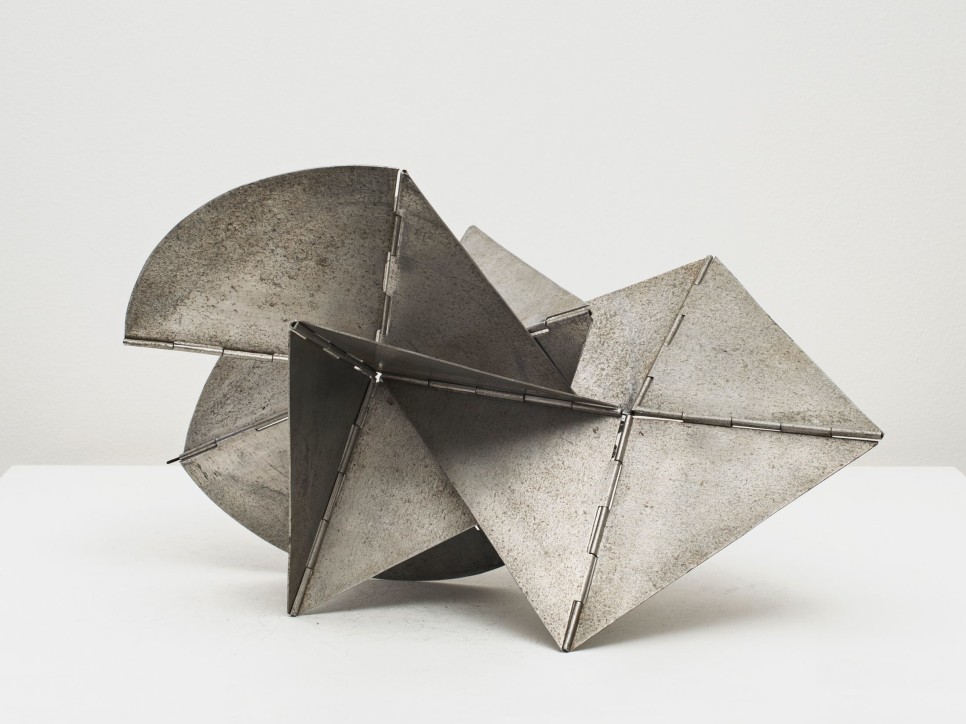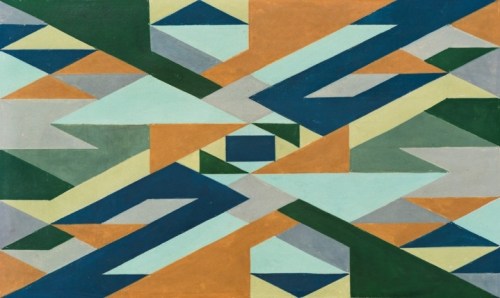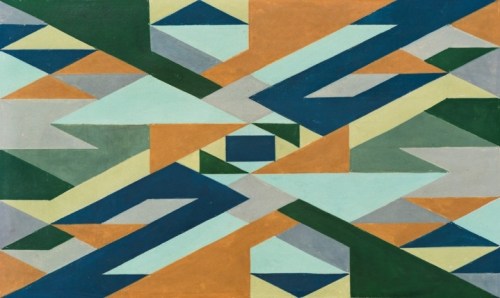

Lygia Clark, Planos em superficie modulada, 1952 © O Mundo de Lygia Clark-Associação Cultural, Rio de Janeiro
Who? Brazilian artist Lygia Clark (1920-1988) was a radical pioneer of contemporary art who spent her professional life pushing at the very boundaries of what art could and should be. In the first half of her career, she played a key role in the geometric abstraction, Neo-Concretist and Brazilian Constructivist movements, before going on to champion participatory art, exploring art’s therapeutic potential as a means of tapping into sensory memory. “We do everything so automatically that we have forgotten the poignancy of smell, of physical anguish, of tactile sensations of all kinds,” she famously said.
Since her death, Clark has been celebrated in a number of international exhibitions, including a major retrospective of her work at MoMA in 2014, which have firmly established her far-reaching artistic legacy. Now, a new show at Guggenheim Bilbao, titled Lygia Clark: Painting as an Experimental Field, looks to shed light on a lesser-known, but nonetheless vital, period of her work: the first decade of her artistic output, spanning 1948 through 1958. During this time, Clark developed many of the ideas and stylistic traits that would come to define her later work – in particular her innovative determination to create so-called “dynamic environments” through art.
What? The exhibition, which inhabits three rooms of the visually arresting Frank Gehry-designed museum in the centre of Bilbao, is split into three corresponding sections, each dedicated to a significant shift of direction in Clark’s artistic practice during her formative years. Clark had an unhappy childhood – she never felt accepted by her repressively bourgeois family, and from a young age took to drawing as a means of escapism and self-expression. When she was just 18, she married a civil engineer named Aluízio Clark Ribeiro, and relocated from her hometown of Belo Horizonte to Brazil’s then-capital, Rio de Janeiro. By the age of 25, she had three children and could no longer resist the desire to create.
In 1947, she began training under the Brazilian Modernists Roberto Burle Marx and Zélia Ferreira Salgado, taking on traditional subjects in charcoal and paint, while demonstrating her innate interest in what curator Geaninne Gutiérrez-Guimarães terms “vernacular colour, stylised form, and flattened space”. A passionate fan of Piet Mondrian and Paul Klee, in 1950 Clark opted to spend two years in Paris under the tutelage of Fernand Léger and Árpád Szenes. There, her work took a more abstract turn, as evidenced in various architectonic graphite works from the time and beguiling geometric paintings with a chromatic, modular bent.
View full article at anothermag.com

